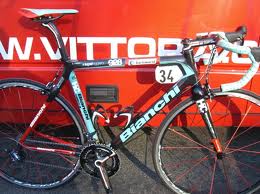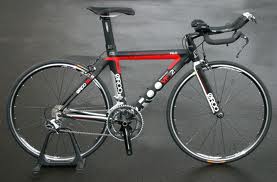The Olympic Games wrapped up last weekend and we watched ITU racers take center stage at the Triathlon venue. Not only did we witness phenomenal racing, but it was a great chance to view what may be the most versatile bike set up for most age group triathletes – a road bike with short clip-on aero bars. “What?” you might ask. I am a triathlete. Shouldn’t I be on a triathlon bike? Not so fast.
 There are some fundamental geometrical differences between a tri bike and a road bike to understand. The road bike has been around for over one-hundred years and has evolved, generally speaking, to have a head tube and seat tube that are parallel to each other at or near 73-degrees to the horizontal. This places the saddle further back in relation to the bottom bracket. A rearward saddle allows for more posterior muscle recruitment and evenly distributes the rider’s weight 50/50 between the front wheel and back wheel. This makes for a bike that is great for climbing long mountain passes as well as bombing down technical descents and braking heavy in hairpin turns. You can also get a fairly low back by riding in the drops of the bars or sitting tall and upright for a big climb. In other words, the road bike has evolved to be the jack of all trades—the do-anything-anywhere bike.
There are some fundamental geometrical differences between a tri bike and a road bike to understand. The road bike has been around for over one-hundred years and has evolved, generally speaking, to have a head tube and seat tube that are parallel to each other at or near 73-degrees to the horizontal. This places the saddle further back in relation to the bottom bracket. A rearward saddle allows for more posterior muscle recruitment and evenly distributes the rider’s weight 50/50 between the front wheel and back wheel. This makes for a bike that is great for climbing long mountain passes as well as bombing down technical descents and braking heavy in hairpin turns. You can also get a fairly low back by riding in the drops of the bars or sitting tall and upright for a big climb. In other words, the road bike has evolved to be the jack of all trades—the do-anything-anywhere bike.
About twenty years ago, aero bars arrived on the scene. When we first slapped these bars on our road bikes, we soon realized that we had to bend over more at the waist to get down to the aero position. This compressed our hip flexors and caused a reduced power output. We learned to solve this problem by sliding our saddles forward, which allowed the hip angle to open up slightly and let our hip flexors fire more freely.
In the late ’80s and early ’90s, we took this forward movement to extremes. We reversed our seat posts, slammed our saddle forward and some manufactures even came out with dog-legged seat post designs, all aimed at moving the riders hips forward over the bottom bracket to open up the hip angle while riding on aero bars. The unintended consequence of this forward saddle movement was that we now placed seventy percent or more of the rider’s weight over the front wheel. This dramatically affected the handling of the bike making it twitchy in corners and requiring constant attention to keep it moving in a straight line. The common complaint at the time was, “I don’t like aero bars as they make my bike feel twitchy and unstable.”
 Enter the tri bike. In 1989, Quintana Roo introduced the world’s first tri bike – the QR Superform. It was essentially a geometrical solution to the bike handling issues that were being caused by aero bars on a road bike. The seat tube was steepened to 80-degrees so the saddle wouldn’t have to be jury rigged forward anymore. The head tube was slackened to near 70-degrees to provide more stability and even out the rider weight distribution. It was also made with 650c wheels on all sized bikes. (That is another topic for another time).
Enter the tri bike. In 1989, Quintana Roo introduced the world’s first tri bike – the QR Superform. It was essentially a geometrical solution to the bike handling issues that were being caused by aero bars on a road bike. The seat tube was steepened to 80-degrees so the saddle wouldn’t have to be jury rigged forward anymore. The head tube was slackened to near 70-degrees to provide more stability and even out the rider weight distribution. It was also made with 650c wheels on all sized bikes. (That is another topic for another time).
But the thing to understand about the tri bike is that whereas the road bike has evolved to be the do-everything-pretty-well bike, the tri bike is designed to do one thing extremely well—ride in the aero position on aero bars. As soon as a rider gets out of the aero bars on a tri bike, they are now riding on a poorly performing road bike. The seat tube is too steep to allow for optimal posterior muscle recruitment and the head tube is too slack to allow for a quick handling front end. It is not the kind of bike for climbing a two-hour mountain pass and then bombing down the other side.
The tri bike is in its element when it is ridden at race pace efforts, in the aero bars, over flat to rolling non-technical terrain. This describes about 90% of all triathlons – especially in North America. Ironman Hawaii is a perfect example of a tri bike course – 56 miles out on a smooth highway, one turn, 56 miles back. Put your head down and go. If you plan on spending most of your race in the aero bars, then the tri bike is the way to go as everything about the engineering of that bike is built around facilitating the aero position.
In our next blog article, we’ll discuss the versatility of a road bike.


